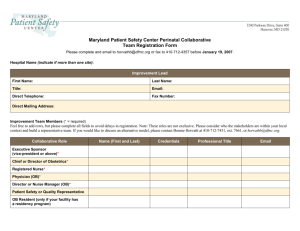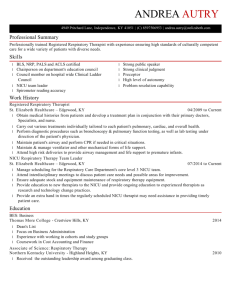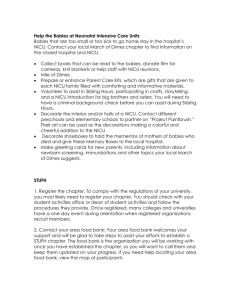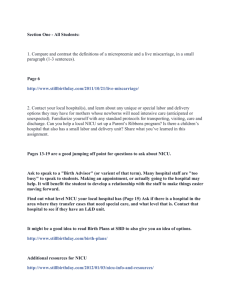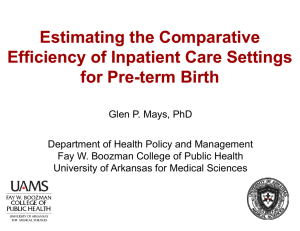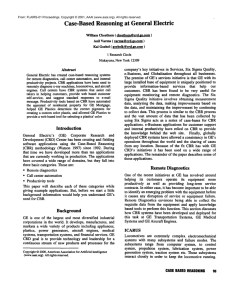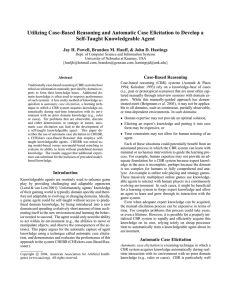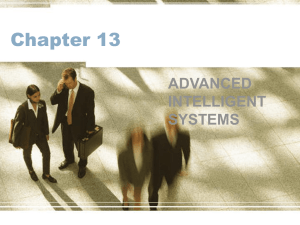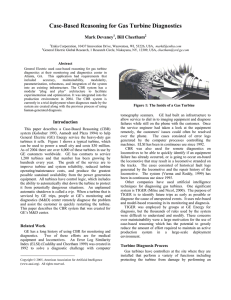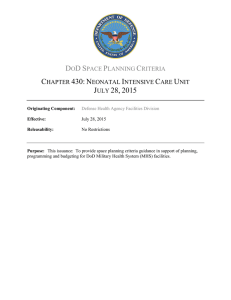a case-based reasoning (cbr) - Systems and Computer Engineering
advertisement
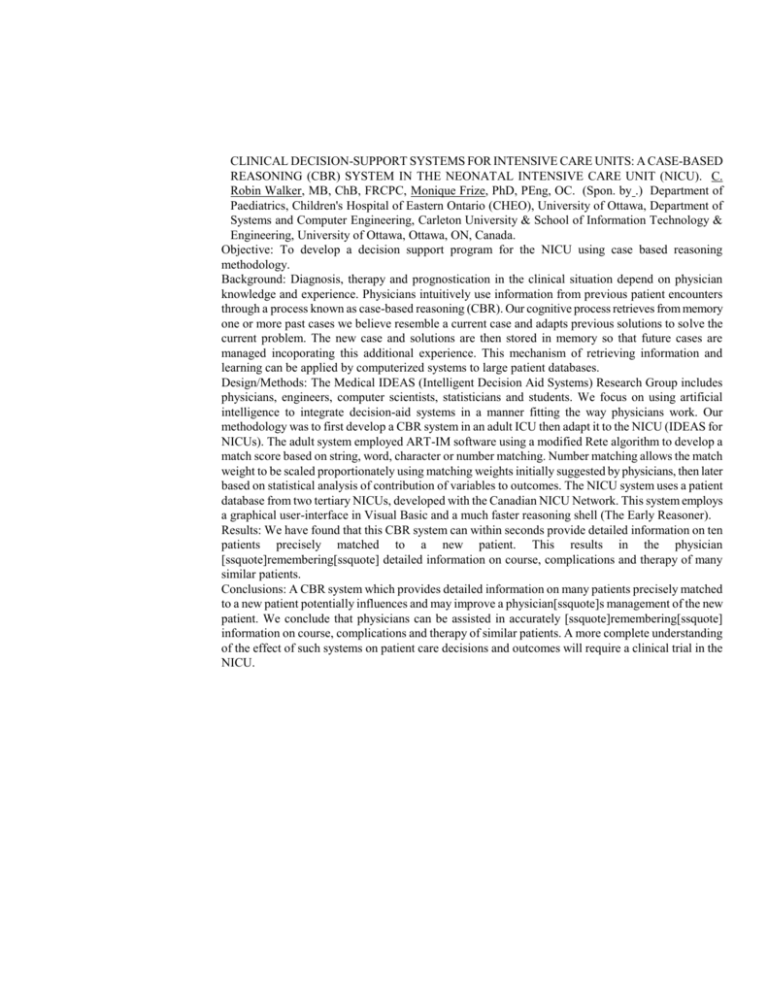
CLINICAL DECISION-SUPPORT SYSTEMS FOR INTENSIVE CARE UNITS: A CASE-BASED REASONING (CBR) SYSTEM IN THE NEONATAL INTENSIVE CARE UNIT (NICU). C. Robin Walker, MB, ChB, FRCPC, Monique Frize, PhD, PEng, OC. (Spon. by .) Department of Paediatrics, Children's Hospital of Eastern Ontario (CHEO), University of Ottawa, Department of Systems and Computer Engineering, Carleton University & School of Information Technology & Engineering, University of Ottawa, Ottawa, ON, Canada. Objective: To develop a decision support program for the NICU using case based reasoning methodology. Background: Diagnosis, therapy and prognostication in the clinical situation depend on physician knowledge and experience. Physicians intuitively use information from previous patient encounters through a process known as case-based reasoning (CBR). Our cognitive process retrieves from memory one or more past cases we believe resemble a current case and adapts previous solutions to solve the current problem. The new case and solutions are then stored in memory so that future cases are managed incoporating this additional experience. This mechanism of retrieving information and learning can be applied by computerized systems to large patient databases. Design/Methods: The Medical IDEAS (Intelligent Decision Aid Systems) Research Group includes physicians, engineers, computer scientists, statisticians and students. We focus on using artificial intelligence to integrate decision-aid systems in a manner fitting the way physicians work. Our methodology was to first develop a CBR system in an adult ICU then adapt it to the NICU (IDEAS for NICUs). The adult system employed ART-IM software using a modified Rete algorithm to develop a match score based on string, word, character or number matching. Number matching allows the match weight to be scaled proportionately using matching weights initially suggested by physicians, then later based on statistical analysis of contribution of variables to outcomes. The NICU system uses a patient database from two tertiary NICUs, developed with the Canadian NICU Network. This system employs a graphical user-interface in Visual Basic and a much faster reasoning shell (The Early Reasoner). Results: We have found that this CBR system can within seconds provide detailed information on ten patients precisely matched to a new patient. This results in the physician [ssquote]remembering[ssquote] detailed information on course, complications and therapy of many similar patients. Conclusions: A CBR system which provides detailed information on many patients precisely matched to a new patient potentially influences and may improve a physician[ssquote]s management of the new patient. We conclude that physicians can be assisted in accurately [ssquote]remembering[ssquote] information on course, complications and therapy of similar patients. A more complete understanding of the effect of such systems on patient care decisions and outcomes will require a clinical trial in the NICU.

